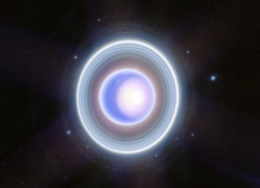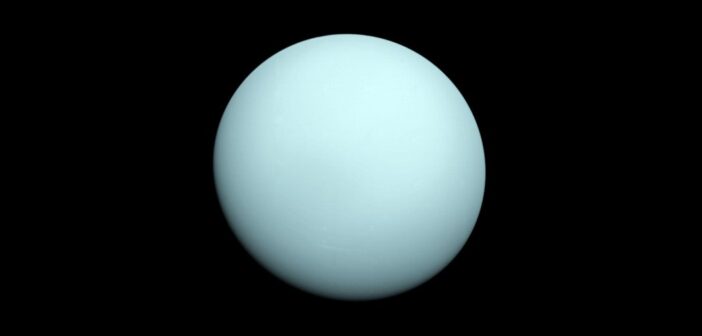When the next flagship planetary science mission arrives at Uranus after years of interplanetary travel, it’s going to need to know exactly where it should fly near this poorly mapped, distant world. In a recent study, astronomers attempt to strike a balance between risk and reward and present several possible trajectories.
Visiting a Lonely Planet
Setting our home planet Earth aside for obvious reasons, you might be forgiven for assuming that we’re equally familiar with the remaining seven planets in our solar system. But, even after decades of robotic exploration, this is not the case: though we’ve mapped every inch of Mars and spent years circling Saturn, humanity has only visited Uranus and Neptune once apiece. These visits, which happened more than 30 years ago and lasted only a few hours each, answered some questions about the structure and formation of these planets but left many more unresolved.

An image of Uranus and its rings taken recently by JWST. [NASA, ESA, CSA, STScI]
Before such a mission can begin its investigation in ~2050, however, scientists and engineers need to painstakingly plan out exactly where the spacecraft needs to go and what it needs to carry if it’s going to answer the questions we create it to resolve. A recent study led by Marzia Parisi, Jet Propulsion Laboratory, adds to this effort by considering which orbital trajectory would yield the most useful scientific measurements.
Planning Ahead
Scientists can measure things like the density structure of a planet by tracking how a probe’s speed changes as it travels along its orbit. The closer the spacecraft can get to the planet, the better, since that’s where the subtle effects will be most pronounced.

Top: Uranus and three potential types of trajectories. The safest, in purple, was ultimately disfavored over the more risky, but more rewarding, yellow and green trajectories. Bottom: a 2D map projection of the same tracks. [Parisi et al. 2024]
It would be ideal if mission designers could avoid the dangerous inner region altogether and always remain outside the rings. As Parisi and collaborators demonstrate, however, if the probe stays in this safe region throughout the planned 90-day mission, it won’t be able to conclusively differentiate between solid and liquid core models. If they instead accept the risk and “plunge” between the rings and the surface once per orbit, they’d be able to achieve the mission objectives with only eight laps around the planet.
While we’re still years away from deals with contractors to actually build the mission, studies like this are essential to design the future flagship. The final trajectory decisions won’t be made for a while, but if we ever see photos taken by a robot streaking between Uranus’s cloud tops and rings, we’ll be able to trace its journey to that moment to articles like this.
Citation
“Uranus Orbiter and Probe: A Radio Science Investigation to Determine the Planet’s Gravity Field, Depth of the Winds, and Tidal Deformations,” Marzia Parisi et al 2024 Planet Sci. J. 5 116. doi:10.3847/PSJ/ad4034
